Are Omega-3s Poised For Growth in Europe Again?
5 Jun 2012Growth rates in the European nutritional market have fallen during the past few years and omega-3s are certainly no exception to this trend. In a report commissioned by GOED, Frost & Sullivan estimated that consumption in Europe is only going to increase 2.6% in coming years. Much of this has been attributed to uncertainty about […]

Growth rates in the European nutritional market have fallen during the past few years and omega-3s are certainly no exception to this trend. In a report commissioned by GOED, Frost & Sullivan estimated that consumption in Europe is only going to increase 2.6% in coming years. Much of this has been attributed to uncertainty about health claims. A good chunk of the industry’s growth has always come from new product launches, so it makes sense that if it is unclear how to market new products, companies will be less likely to launch products until that uncertainty is cleared up.
Yet Frost & Sullivan’s growth forecasts are based mainly on interviews conducted with industry members, and after all, this is just a forecast. And now with the recent EFSA opinions for omega-3s, we have multiple Article 13 and 14 claims approved, we have a Nutrient Reference Value (NRV), and consumer awareness is already high. So does this mean that growth in the omega-3 market can start increasing again?
In the fortified food market, Europe was an early innovator with omega-3s, but new product launches virtually came to a halt with the financial crisis in 2008. Fast forward four years and we now have consumers who are aware of omega-3s, a way to communicate the benefits to them (claims), and guidance on inclusion levels (NRVs). However, there are multiple food categories in countries throughout Europe where leading brands are not leveraging omega-3s. Food companies should look at this as a prime opportunity to differentiate from their competition. We have consistently seen that in concentrated categories of the food market, a first mover advantage is important. When you have 2-3 leading brands in a category like juices, the brand owners are generally trying to manage their own brand identities and equity as distinct entities from their competitors. So trying to leverage omega-3s into your products could provide some sustainable differentiation for your brand.
Supplement companies have some unique opportunities for new product launches as well. One of the challenges in omega-3s is bringing new users to the category. There is a portion of this non-user base that does not like the technical features of many omega-3 supplements, including pill size, taste, etc. With the new NRV of 250 mg per day, companies can make once-per-day products based on a real nutritional value, but more importantly, they can also use highly concentrated oils to deliver this NRV in a capsule that is one-third the size of a typical fish oil capsule. With new emulsion technologies and new sources of omega-3s, companies also have the opportunity to bring to Europe exciting new products that have found traction in markets around the world. There are also multiple new opportunities for brain and heart health products that are now differentiated from most other nutritional supplements that do not have approved claims. All of this will appeal to new omega-3 consumers and should provide some interesting value for existing users as well.
So we think that if everything continues as-is in the market, we can probably expect growth to continue around 2-3%. However, if a few companies are able to generate success with new product launches, this could lead to a much bigger trend and growth rates sneaking back towards the 8-10% range seen in other regions of the world.
Related news

Plastic packaging reduction requires industry rethink
6 Jan 2023
The food and beverage sector is calling for industry-wide collaboration and business model updates to reduce the environmental impact of plastic packaging.
Read more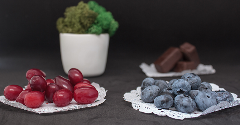
Misleading nutrition claims mask true sugar levels in baby food
5 Jan 2023
Some baby and toddler food and drink products, sweetened with fruit concentrate, contain up to four teaspoons of sugar per serving yet are marketed as having ‘no added sugar’, according to a survey by Action on Sugar.
Read more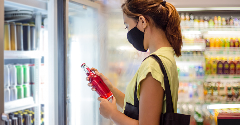
Asian beverage brands deal with rising costs
4 Jan 2023
Decreasing bottle sizes or increasing prices? Asian beverage brands are finding “creative approaches” to manage rising costs, according to industry analysts.
Read more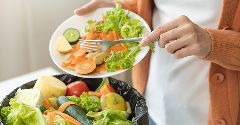
Preserving the freshness of food to fight waste
3 Jan 2023
Several companies are producing products that absorb ethylene, the hormone that causes food to ripen, in attempt to reduce food waste.
Read more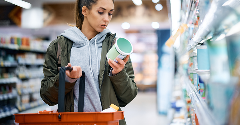
Value-seeking US consumers cut back on food spending
2 Jan 2023
Cheaper items, smaller sizes, and shorter grocery lists: inflationary effects coupled with a global long-term recession are set to continue shaping food spending habits, according to a recent Rabobank report.
Read more
Opportunities grow for lower-caffeine coffee
23 Dec 2022
Many consumers want the mental focus of caffeine without the jitters, prompting a wave of product development such as “half caffeine” ground coffee or ready-to-drink (RTD) cold brew blended with relaxing botanicals.
Read more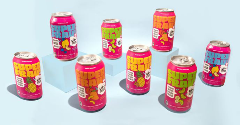
Superfrau upcycles liquid whey for energy drinks
22 Dec 2022
US company Superfrau turns surplus whey into sustainable, upcycled-certified dairy products for the recovery drinks market.
Read more
Malaysian brand Nanka brings jackfruit range to Europe
21 Dec 2022
Malaysian brand Nanka is expanding to new Asian and European markets with its fast and ready-to-eat plant-based products based on jackfruit.
Read more
Is the UK on target to meet its 2025 Plastics Pact?
20 Dec 2022
Major food industry players, including Arla, Kerry, PepsiCo and TerraCycle, have signed the UK’s voluntary Plastic Pact to reduce plastic from the supply chain – but are they on track to meet their targets?
Read more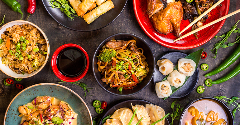
Chinese food brand wants to give customers ‘the full experience’
16 Dec 2022
Food brand Xiao Chi Jie is revamping Chinese cuisine for the modern American consumer. The Washington-based company sells regional Chinese specialties like soup dumplings, noodle kits, and barbeque skewers direct-to-consumer in the US.
Read more